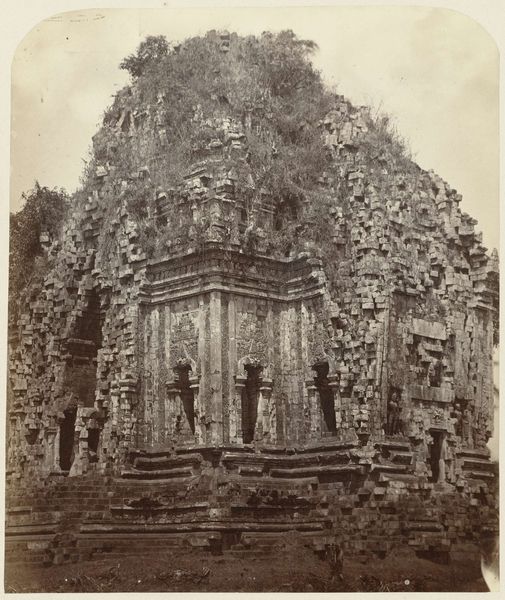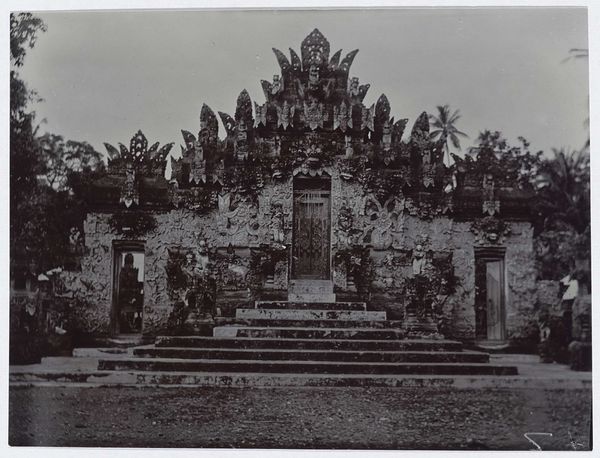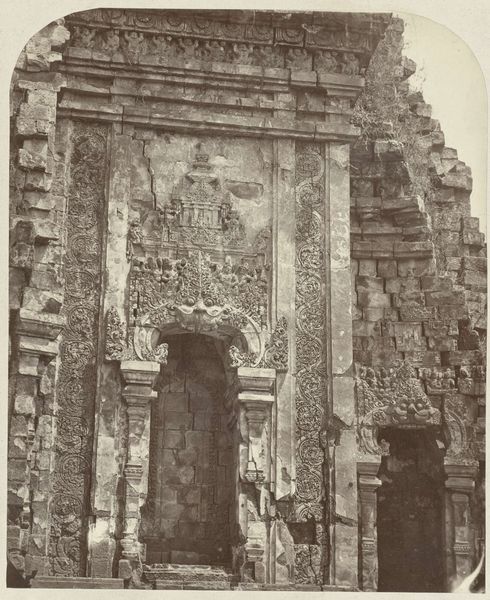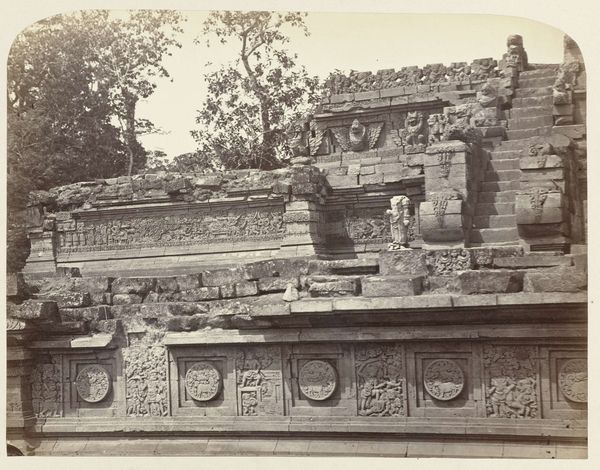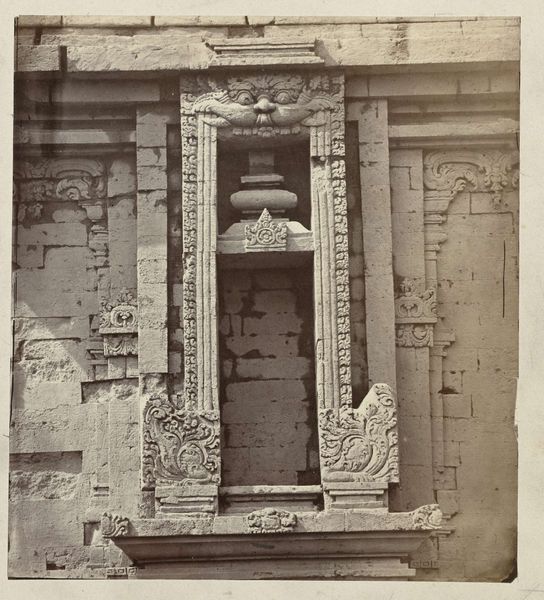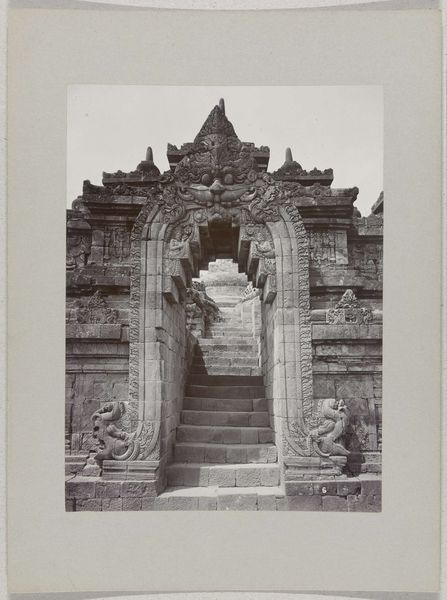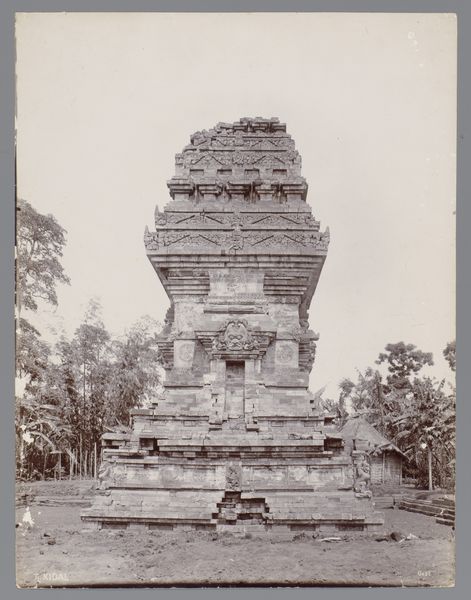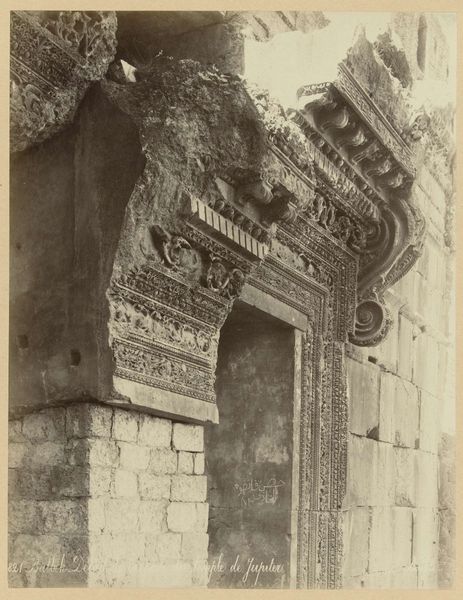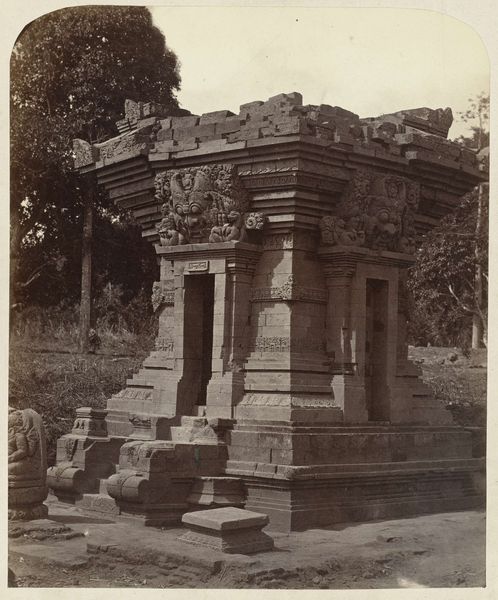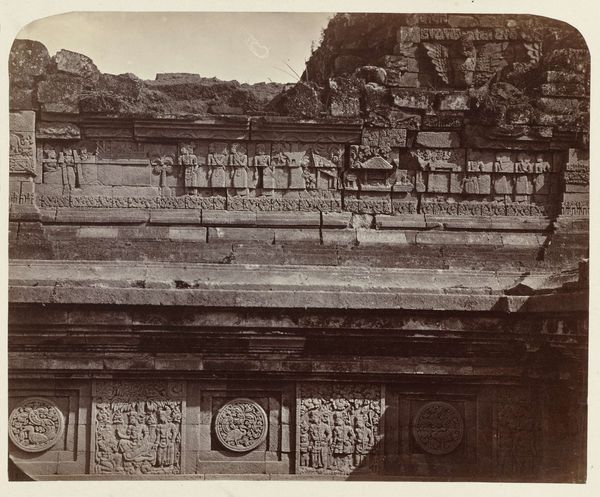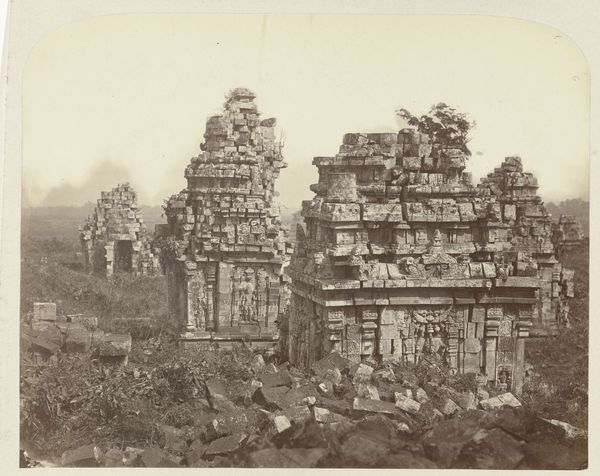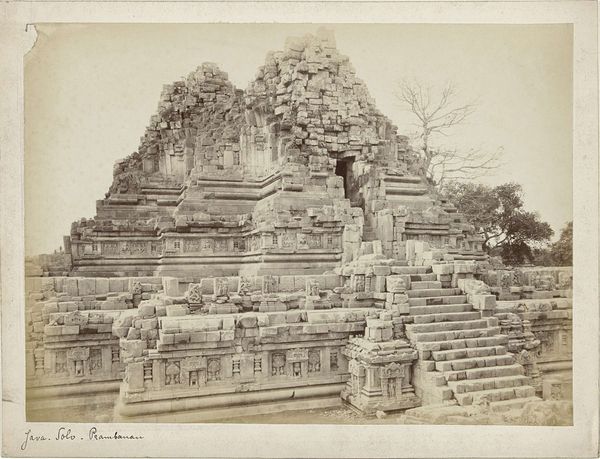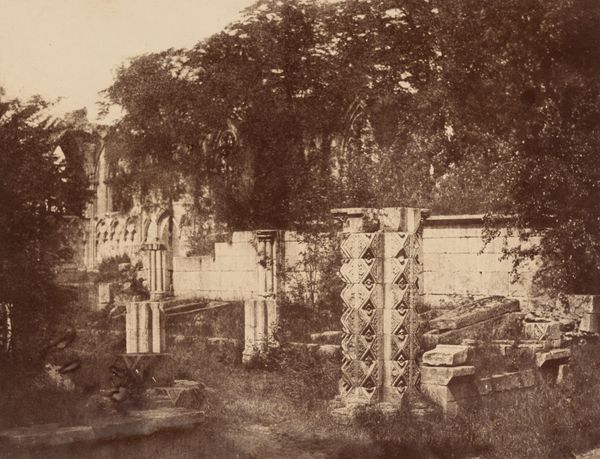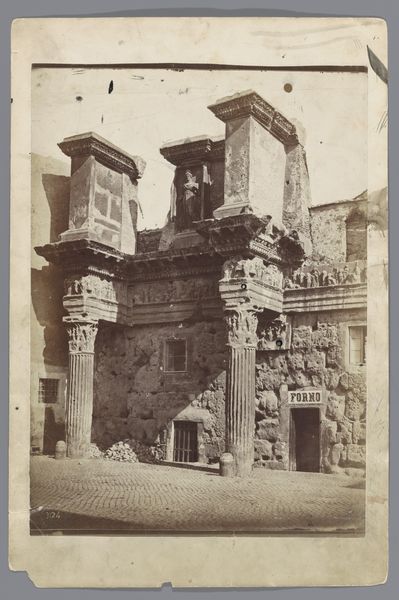
print, photography
#
16_19th-century
# print
#
asian-art
#
landscape
#
photography
#
ancient-mediterranean
#
19th century
Dimensions: height 165 mm, width 220 mm
Copyright: Rijks Museum: Open Domain
Editor: Here we have Kassian Céphas's "Poort van Taman Sari, Jogjakarta" from 1881, a photograph now held in the Rijksmuseum. It’s a wonderfully textured image of a gateway, almost swallowed by its ornamentation and the encroaching foliage. What draws your eye when you look at this photograph? Curator: The first thing that strikes me is the image as a product of labor and power. Consider Céphas: as a Javanese photographer in the Dutch East Indies, he was working within a colonial structure. Photography itself was a relatively new and expensive technology, requiring specialized equipment and chemical processes. This wasn't a simple snapshot; it involved deliberate choices about materials, technique, and presentation, shaping how the Dutch perceived Indonesian culture and architecture. Editor: That's a really interesting point. I hadn't thought about the colonial implications in that way. So, the very act of making this image, the materials involved, and who had access to them speak volumes? Curator: Exactly. Think about the materiality of the print: the paper, the chemicals, the lens grinding—each element represents resources extracted, processed, and distributed according to colonial power dynamics. Céphas's position as a local photographer also complicates the traditional Western gaze often associated with these types of images. How does the architecture fit into the broader history of material production in Java at the time? Editor: I suppose the craftsmanship evident in the gate’s carvings, which seem to be crumbling under time and vegetation, is a contrast with the controlled medium of photography. The gateway is Javanese handcraft but viewed through a western industrial lens. Curator: Precisely. By juxtaposing the organic with the inorganic, nature versus human-made, the image invites a deeper investigation of resource allocation, exploitation of labour, and colonial administration of materials. Editor: I hadn’t considered it in such a multi-layered, materially conscious way. I'm starting to see this photograph as far more complex. Curator: Right? The image becomes an entry point to examine power relations beyond aesthetics alone, thinking about the photograph as a commodity, not only a representation.
Comments
No comments
Be the first to comment and join the conversation on the ultimate creative platform.
